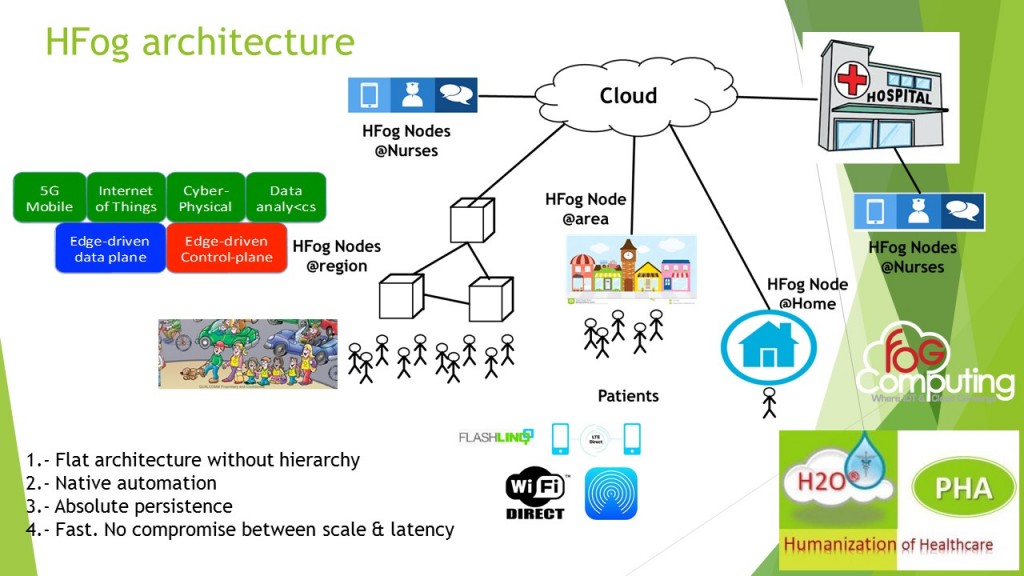The non profit association of the Open FOG CONSORTIUM recently born in Freemont,CA (November 19th, 2015) with ARM, Cisco, Dell, Intel, Microsoft and Princeton University cooperations, stablished the requirements to solve the existing problems on computing-sensing-storage @ the EDGE OF THE NETWORK , such as:
- Connection losses
- Bottlenecks in bandwidth
- Excesive time communication with network nodes (latency).
The FOG will act directly in the 5 aspects
- Realtime procesing of the CPS (cyber-physical system)
- Awareness of the Client-centric needs. Specially essential when privacy and reliability cannot be trust in the Cloud.
- Efficiency, pooling local resources. Idle processing power, sensing ability and wireless connectivity within the edge may be pooled.
- Agility, with a rapid innovation in an affortable scaling. It take advanges of the smart phone API and SDK, proliferation of mobile apps, and offer a networking service through its own API.
- Operate on encrypted and multipath traffic.
Since 2014 we have been promoting that is essential to build a specific FOG in health 4.0 (the HFOG). If one data is essential to fulfill low latency, efficiency and real-time processing is the personal health data of the individuals obtained by wearable-insidables-implantables de vices, that is healthcare. In both aspects
DATA MANAGING with
- Content caching at the edge and bandwith management
- Using idle computing/storage/badwidth
- Asure P2P direct comunication (e.g., FlashLinQ, LTE Direct, WiFi Direct, Air Drop)
- Build Cloudets or micro data centers.
CONTROL MANAGING with
- Fog-RAN, FOG driven radio access network.
- Client-based HetNets
- Client controlled cloud storage.
- Edge analytics and realtime stream mining.
We are promoting the functions available for Health 4.0 (any time-how-where-thing) but it is clear that full functionality will be achieved in the 5G networks but it enters in deep in the IoT devices and therefore in healthcare wearables. The visibility, control, and value-added will be drastically different in the alternative scenario where the gateways are dynamically chosen or the Things can sometimes have direct communication paths without a gateway.
Although Fog networks do not have to have any virtualization (SDN) or to be information-centric (ICN), and hybrid of both information-centric and software-defined Fog network could also be built.
From the HFOG point of view it is important to take into account
- a plus on security issues: Given that it is often easier to hack into client software, perhaps security at hardware level on client devices have to be introduced. But on the other hand, because of the proximity to end users and locality on the edge, nodes in Fog networks can often act as the first node of access control and encryption, providing contextual integrity and isolation, and enabling the control of aggregating privacy-sensitive data before it leaves the edge which is essential in healthdata.
- The role of Edge analytics well stablished on health risk management data from wearables accurate triggers that allow health prevention.
- The P2P direct communication with the personal health assistants- PHAs


